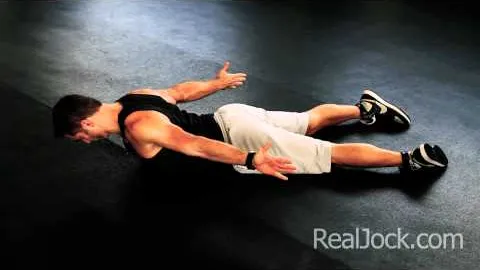

If you are looking to strengthen your core and back muscles, the Cobra exercise is a highly effective and popular choice that can yield impressive results. Not only does it target key muscle groups, but it also improves flexibility and posture. In this article, we will delve deeper into the benefits and technique of the Cobra exercise, ensuring you achieve optimal results from this dynamic workout.
Strengthens the Core: The Cobra exercise primarily targets the muscles of the core, including the abdominals and obliques. By engaging these muscles, you build a foundation of strength for other exercises and daily activities.
Improves Back Strength: One of the key benefits of the Cobra exercise is its ability to strengthen the muscles along the entire length of the spine. This can help alleviate back pain and prevent future injuries.
Enhances Posture: By strengthening the muscles of the back and core, the Cobra exercise promotes proper alignment of the spine, leading to improved posture. This, in turn, can relieve tension and discomfort in the upper body.
Increases Flexibility: As you execute the Cobra exercise, you simultaneously stretch and lengthen your abdominal muscles, hip flexors, and quadriceps. This stretch is essential for maintaining flexibility and preventing muscular imbalances.
Stimulates the Digestive System: The Cobra exercise involves compression of the abdominal region, which stimulates the digestive organs. This can improve digestion and provide relief for common digestive issues, such as bloating and constipation.
To reap the full benefits of the Cobra exercise, it is crucial to perform it with proper technique. Follow these steps to ensure optimal results:
Starting Position: Begin by lying face down on a comfortable mat or surface. Position your hands directly under your shoulders with your fingers facing forward. Keep your legs extended straight and toes pointed.
Engage the Core: Gently press your pubic bone and the tops of your feet into the mat. Activate your core muscles by drawing your belly button towards your spine. This engagement will protect your lower back throughout the exercise.
Lift the Chest and Head: Using your back muscles, slowly lift your chest and head off the ground while keeping your lower body grounded. Focus on the sensation of lengthening your spine, rather than pushing your weight onto your hands.
Open the Chest: As you lift your chest, roll your shoulders back and down, opening up the chest area. This posture helps improve lung capacity and breathing efficiency.
Maintain the Position: Hold the lifted position for a few breaths, ensuring you continue breathing deeply and evenly. Avoid straining your neck or crunching your lower back.
Release and Repeat: Slowly lower your chest and head back down to the starting position. Take a moment to rest and then repeat the exercise for a predetermined number of repetitions.
Once you have mastered the basic technique of the Cobra exercise, you can explore advanced variations to further challenge your core and back muscles. Here are two options you can consider:
One-Leg Cobra: Start in the same position as the basic Cobra exercise, but this time, lift one leg off the ground while lifting your chest and head. Alternate between legs for an added challenge.
Cobra with Twist: After lifting your chest and head off the ground, rotate your upper body to one side, reaching your opposite arm towards the ceiling. Hold for a few seconds, then return to the center and repeat on the other side.
Incorporating the Cobra exercise into your regular workout routine can yield numerous benefits for your core and back muscles. By diligently following the proper technique and gradually advancing to more challenging variations, you can strengthen your muscles, improve your posture, and enhance your overall flexibility. Remember to consult with a fitness professional or healthcare provider before starting any new exercise program, especially if you have pre-existing back conditions or injuries.
If you're looking for a gym, fitness club or yoga studio, you've come to the right place.
You can find information about gyms in your area. Browse catalog of gyms and find gyms with classes which are you looking for.
On gym page you can find simple information like address, phone or website. You can find list of available classes. You can check availability of personal training or small group classes. On place page you can also see information about open hours.
You can find gyms near you with amenities, courts, studios and equipments.
Use our map to find gym at your city or district.
In Gym Navigator you can find list of exercises with movies for many body parts.
You can browse exercises catalog and find exercises the best of you.
You can also find exercises grouped into workout plans, which you can use to improve you body. Each routine show you exercises one by one and give you possibility to count you progress and count down rest time.